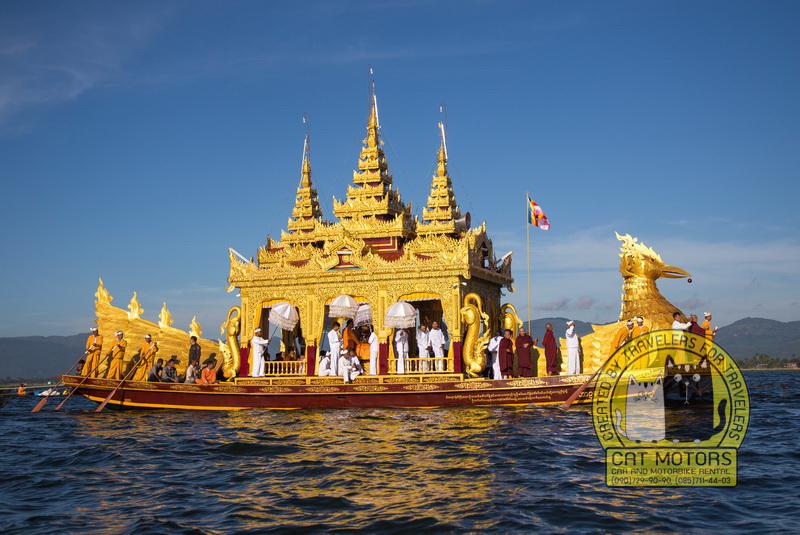History of the Shan
From evidence preserved by the elderly Shan tellers and historical accounts about the Mae Hong Son province, one learns that the Shan, who live in Mae Hong Son, evacuated from the Northeast part of Myanmar from towns such as the Maung Mog Mai, the Maung Nai, the Maung Lang Kur, and others. The Shan moved to live in Mae Hong Son around 1831 during the third reign of King Pra Nang Klao of Ratanakosin City.
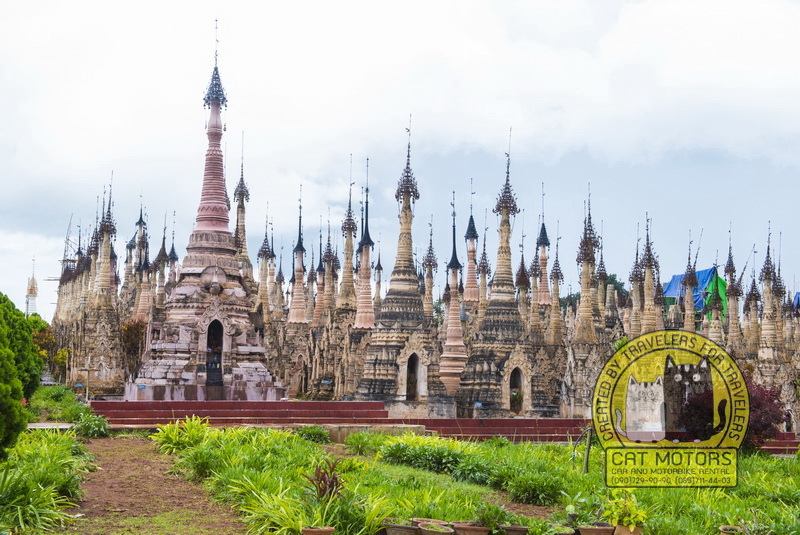
The Shan always came to plant seasonal vegetation and returned to the Shan state upon finishing the harvest until 1950; they then settled at Baan Pangmoo in the Pangmoo sub-district in the Maung district of the Mae Hong Son province. Farming was the main industry until 1850.
Chao Kaewmuangma was sent from Chiang Mai to catch elephants to train for work, so he gathered all the Shan, who lived scattered about, to gather them together to reside in the area, presently Mae Hong Son.
A little bit later, the ruler of Chiang Mai saw that the populace of Baan Mae Hong Son and Baan Pangmoo needed to upgrade to Mae Hong Son town.
He appointed Shan Gale to be the first ruler and gave him the title Phraya Singhanartracha. Afterward, three more rulers changed the management system to create the Mae Hong Son province.
For many years, the Shan of Mae Hong Son has strictly adhered to tradition and culture preserving the lifestyle of the Shan.
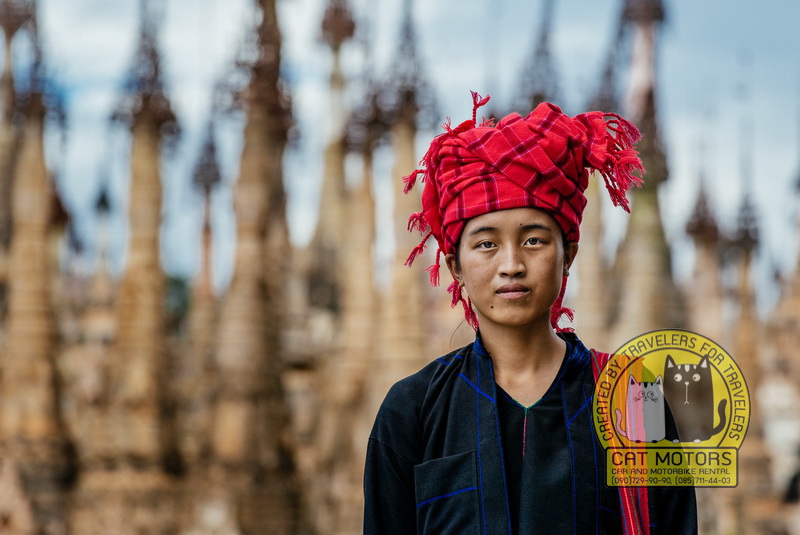
Although times there is some political unrest, they maintain a brotherly relationship with the Shan who live in Myanmar through commerce and friendly visits.
The Shan style of dress reflects their long tradition of a unique culture. The Shan of Mae Hong Son have their own style of dress, as well; the two have only small differences in details depending on the status of living, sex, age, and style of dress. For example, women’s blouses, with long or short sleeves, are like Myanmar’s.
Facings along the edges of the blouses have buttons that pass from the left to the right, and a Thai sarong is worn on their lower torso.
Shan men prefer wearing long sleeve cotton shirts fastened with Chinese buttons and round collars split at the middle and wide-leg trousers. Shan men often carry patterned swords and shoulder bags; ink tattoos typically cover their bodies. When they go out, both men and women usually wear turbans or hats called Gub Tai.
Gwam Tai, the speaking language, is different from the Myanmar language but similar to the Thai.
For writing, the Leek Tai alphabet, which is similar to Mon and Myanmar’s, has been used since ancient times. The spoken and written language of the Shan are unique.
Shan Traditions
The Shan celebrate some tradition or ritual almost every month; most of the traditions focus on gaining merit and giving alms because they are devout Buddhists.
Poi Learn Sib Ed
Around the thirteenth or fourteenth of the waxing moon in the eleventh month, the Shan offer merchandise and food during the day and night to celebrate Sib Ed or the end of Buddhist Lent Day. To gain merit, the villagers purchase food and other items at the temple on the fifteenth of the waxing moon; they give Alms to the Buddhist monks (Tug Bat Tawo) at the Phra That Doi Kong Mu Temple on the top of the hill. The monks will parade down the hill to the Muay Tor temple at the bottom.
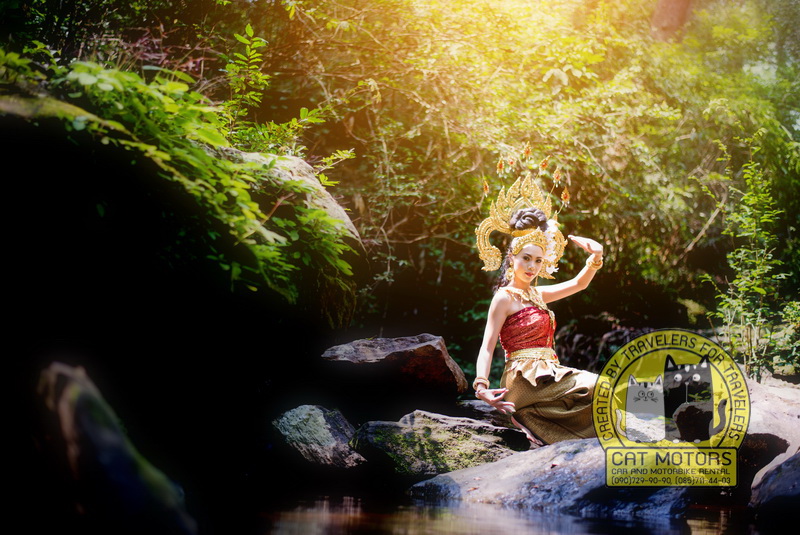
Along the sides of the road, thousands of people will be waiting to give Alms to the monks. At night, houses and temples light very bright lanterns and have the Chong Phara Procession or Castle Procession to welcome the Buddha back from paradise. The castle is decorated, various local entertainments are held, and the Thousand Candles Procession (Lu Ten Heng) takes place.
Chong Phara Tradition
The Chong Phara tradition in the Mae Hong Son province focuses on gaining merit. Chong means a temple or castle, and the other Para means Buddha image or the Lord Buddha. Chong Phara is a castle made of bamboo with padded with mulberry paper. It is decorated in the Shan style with colorful paper, pierced to make intricate patterns. It is then put on a scaffold on which local fruits are hung often decorated with banana and sugar cane trees dorn with lanterns.
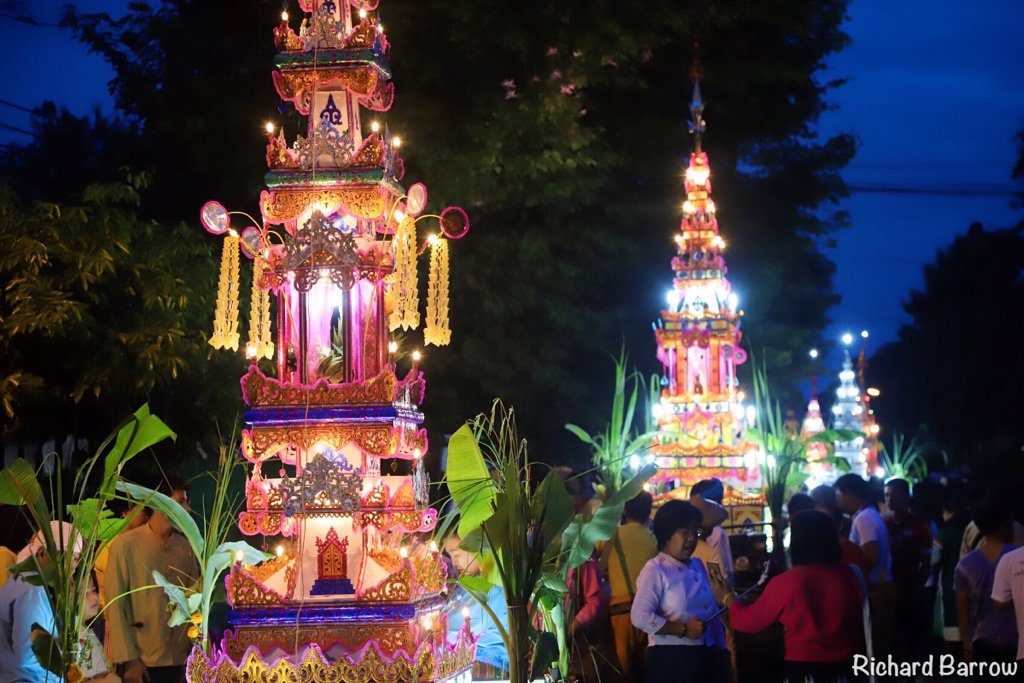
Upon finishing Chong Phara early in the evening, it is ready for worship on the fourteenth day of the waxing moon in the eleventh month; in addition, a welcoming ceremony early in the next morning marks the end of Buddhist Lent day. On this day, the villagers will bring food―steamed rice, dessert, and fruit―in a banana leaf cup to place inside Chong Phara. Incense for worship is lit and an invitation is extended to Lord Buddha to stay in Chong Phara for seven days.
The Chong Phara tradition to worship the Lord Buddha is believed to ensure happiness for a family, and they gain merits. The worshippers believe the village that makes Chong Phara and worships in the temple for seven days will have happiness. At the end of seven days of worship, there is no need to keep Chong Phara because it will be rebuilt the following year, so it is burnt or thrown away
Ton Gia Tradition
After Buddhist Lent Day, each community cuts pine wood into small pieces, decorates, and ties them about 3-5 meters high on a big trunk. The structure is paraded to the temple where it is lit. The procession, lit by a thousand candles, is comprised of offerings along the various roads; the procession will have shows and competitions, one of which is a beauty contest.
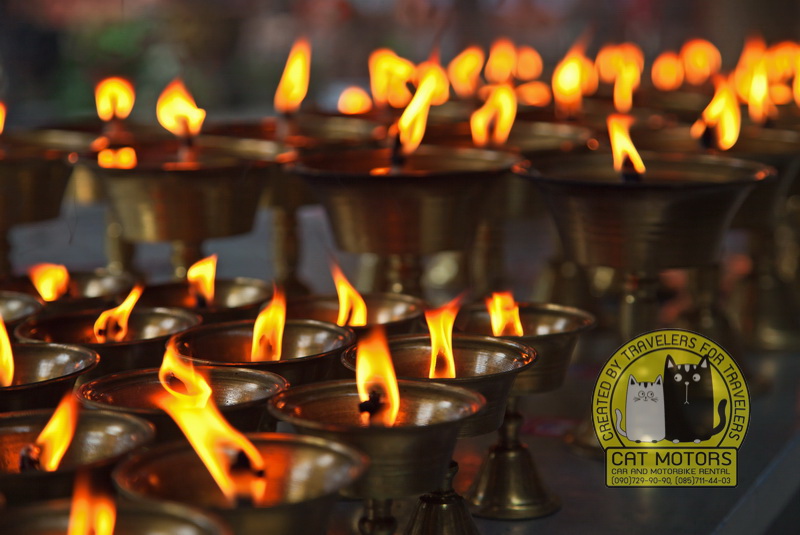
Shan music makes the procession pleasing. The Ton Gia tradition is believed to acquire merit and make life progress smoothly.
Poi Lu Kaow Yaku
Each year, the Poi Lu Kaow Yaku tradition focuses on the villagers who work in agriculture. The Shan believe that upon harvesting, some sacrifice of rice ensures enough rice to nourish their lives in the future and protect their farms. After harvesting rice, they have to give some to the temple to safeguard good fortune, so in February of every year, the Shan uphold the tradition of Kaow Yaku. To make Kaow Yaku, steam the sticky rice until it is cooked. Pour in molasses and coconut milk; after mixing, add some peanuts and roasted sesame. Then, put it on a tray and garnish with some reserved coconut flakes.
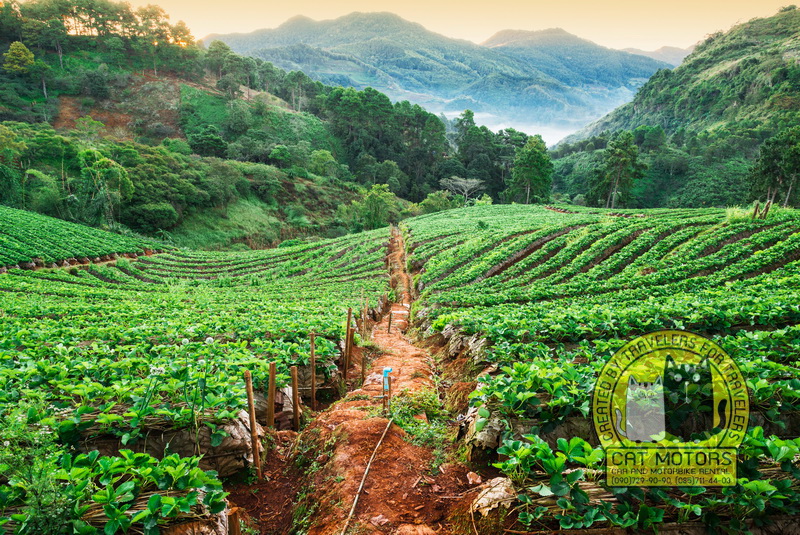
To transport it to the temple, it is wrapped in a banana leaf or put into a bag. The leftovers from Kaow Yaku are donated to the villagers. Traditionally, there is a procession with a decorated cart to carry Kaow Yaku through the village. Folk music with dancing provides entertainment.
Poi Sang Long Tradition (The Novice Ordination)
For hundreds of years since their occupancy, the Shan believed that anyone who held the Poi Sang Long Tradition, the novice ordination or the monk ordination in Buddhism, he or she will acquire a great deal of merit. Most often held during March and April, which is school vacation and free time from working on the farm, Poi Sang Long is an important tradition; it takes approximately a month to prepare, has many steps, is costly, and requires people with knowledge and expertise to ensure success.
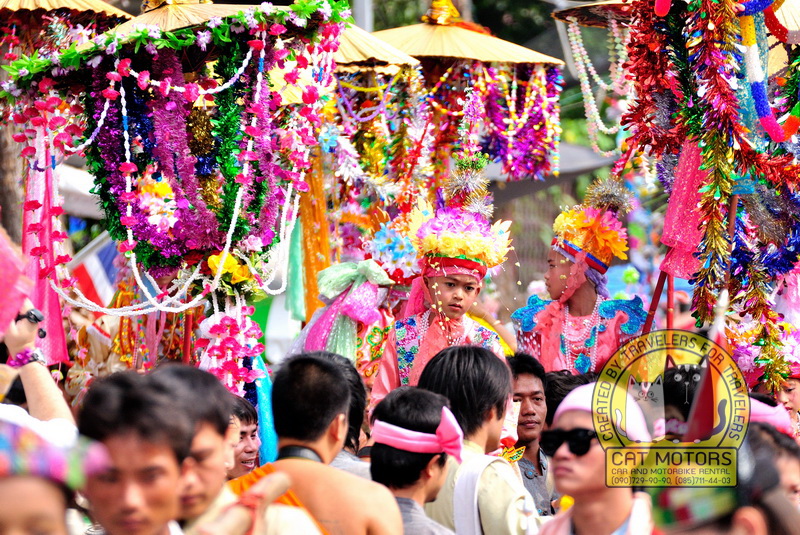
Steps of Preparation
The hosts will meet to discuss and prepare various necessary items, such as the Alms, drums, and various fanfare machines after the agreement to hold a Poi Sang Long Tradition.
In addition, people are assigned to carry out different functions: the cooks, the participants, and the mentors of Sang Long or Tapae Sang Long in Shan. The two to four mentors are charged with taking care of Sang Long like his bathing, dressing, feeding, carrying on the shoulders to various places, opening the umbrella, and attending to security. After preparation, Sang Long is presented by his parents to the abbot in order to be trained. He will memorize the ordination blessing seven to ten days before the date of commencement.
Three to four days before starting the ceremony, many people at the hosts’ house will help prepare the welcome foods and deserts, decorate the Alms, oversee the eight necessities of a Buddhist monk, and prepare other items for the procession. Some will help to decorate Teekum, Sang Long’s umbrella, with multi-colored garlands, and decorate the venue of Poi Sang Long.
At night, the hosts will bring food and join the guests; lights and Klong Mong Sueng (Shan’s drum), a set of drums and cymbals, invite the guests to enjoy the merriment. Everything is ready one day before the ceremony. The parents of Sang Long escort their son to the temple where his head is shaved; he showers with water infused with gold, silver, sompoi, and turmeric for good fortune. He is powdered, covering him in white.
When the first day of the ceremony arrives, Sang Long’s parents and relatives arise before dawn to bathe the boy who will be Sang Long; at the temple he dresses in Sang Long’s attire, emulating the prince of Shan. His loincloth, captured and fastened with a gold or silver belt, hangs longer in the back. His embroidered shirt of various flower patterns has cylinder sleeves with curved, piqued forearms and the shoulders are decorated with round ribbons with ends hanging down.
The shirt and the loincloth colors will be similar, a white or light pink. Sang Long wears white pants, white socks, and a vest; in addition, he carries a fan. Around his neck, he wears a Kabkaw, an ornament, made of round gold-plated patterned pieces. Sang Long’s hair will be up and decorated with different types of flowers, and his head is wrapped in a fresh-colored cloth. Upon completing his attire, Sang Long offers precepts and blessings to the monks.
The monks bless him back. One mentor opens an umbrella for Sang Long while another carries him on his shoulders amidst the dancing from the temple. He is welcomed by music from a long bottom drum, cymbals, gong, and small cup-shaped cymbals.
Afterward, the procession moves to a village shrine to offer reverence and ask for forgiveness, and they enter various temples to ask forgiveness from the monks.
At relatives’ and friends’ houses, they ask for forgiveness to show respect. When Sang Long’s procession arrives at a house, the hosts greet him and ties a thread on his wrist as a welcome. Sang Long blesses them as the monks do; then, the procession will proceed to another house. At night, Sang Long will rest at the host’s house; people will join all throughout the night for merit. Alternating between a Kong Mong Sueng drum and Hed Gwam―singing―guarantees peaceful sleep for the participants in the ceremony. A parade of Alms or Koluu in Shan, where a great number will dress in full decoration and various colors of the Shan style, is held on the second day. The parade of Koluu at the Poi Sang Long tradition draws more participation than any other in Mae Hong Son.
The Alms figure parade includes many sections.
Geeja: The Shan believe that Geeja declares the gaining merit to the angels. Two people carry the drum at the front of the parade; one bangs it slowly.
Ub: Carried by two people to offer to Lord Buddha, this container of silver lacquer and glass decorated similarly to the casket is an offering consisting of flowers, candles, incense, sweets, and flower cones.
Ruler’s horse: This is the specially chosen horse with an elegant, tame demeanor. Its back is covered with a flower-covered blanket and another tack before joining the procession. This invites the village’s ruler of the town shrine to come to join in fortune, happiness, and peace.
Tapesa tree: Tapesa trees offered to Lord Buddha are an important part of the Alms procession. Its features are the same as the castle with a bamboo frame padded with mulberry paper and decorated paper pierced with holes creating multi-colored patterns. It is put on the square base with two bamboo beams for carrying.
Napesa tree: Similar to Tapesa tree, only its decorations are different: plates, bowls, trays, pots, spoons, and glasses―the utensils of the temple.
Poog Kao Tawg: Poog Kao Tawg is popped rice wrapped in mulberry paper tied Jaag Ja, flag triangles. It is tied attractively with bamboo branches. The number of branches is dependent on the number of Sang Long in the procession.
Ten Nguen Ten Kum: These are the candles, incenses, and offerings which will be presented to the preceptor by Sang Long. Held by a woman, the number of them is equal to the number of Sang Longs.
Silver and Gold bushes: Also held by a woman, bushes made of silver and gold paper decorate the procession. They are offerings to Lord Buddha from Sang Long.
U-Tong Pan Tong: Sang Long uses checkers cone, betel cone, and flowers cone for worship.
Maw Num Ta: This clay pot is wrapped by white cloth and lined with nine kinds of leaves, each with a different meaning of good fortune.
Men carry and gong Mong Sueng drums with a bamboo beam.
Carried by both men and women, the eight necessities of a Buddhist monk consist of a yellow robe, the monk’s Alms bowl, bedding, and other items bound with bamboo.
Sang Long will be near the end of the parade. Sang Long, his mentors, and the person who opens the umbrella will all dress in unique, elegant clothes; while moving along the procession, people will dance to the rhythm of the drum which makes the experience enjoyable.
On their way to the temple, the Sang Long procession travel various important road along which old men and women will have popped rice and flowers to sprinkle on those who attend the parade.
Upon reaching the temple, the participants will march around the temple three times; then, the Alms are placed in front of the Buddha. Later, the hosts bring food and join the celebration. In the evening, a banquet ceremony honors Sang Long; after the banquet, the old celebrate Sang Long by tying ribbons on his wrists.
Relatives, parents, and guests will gradually come and do the same at the end of the second day. At the conclusion of the parade, a Rocket procession brings good fortune; lighting it is a tradition on the last day to celebrate Poi Sang Long.
On the third day of the ceremony, Sang Long is brought to be ordained at the temple. In the morning, all join at the temple where they will do a reading in the Shan language from the Dharma book or Thomleeg in Shan.
When lunchtime for the monks arrives, the invited monks are offered food; then, Sang Long and all the guests will eat. When it is time for the ordaining to begin, Sang Long sits in front of the monks and requests a yellow robe.
He changes his attire from Sang Long to that of a novice, and the older monks preach a sermon. Finally, the hosts offer the Alms, Tapesa tree, and the monks’ congratulation at the conclusion of the celebration.
